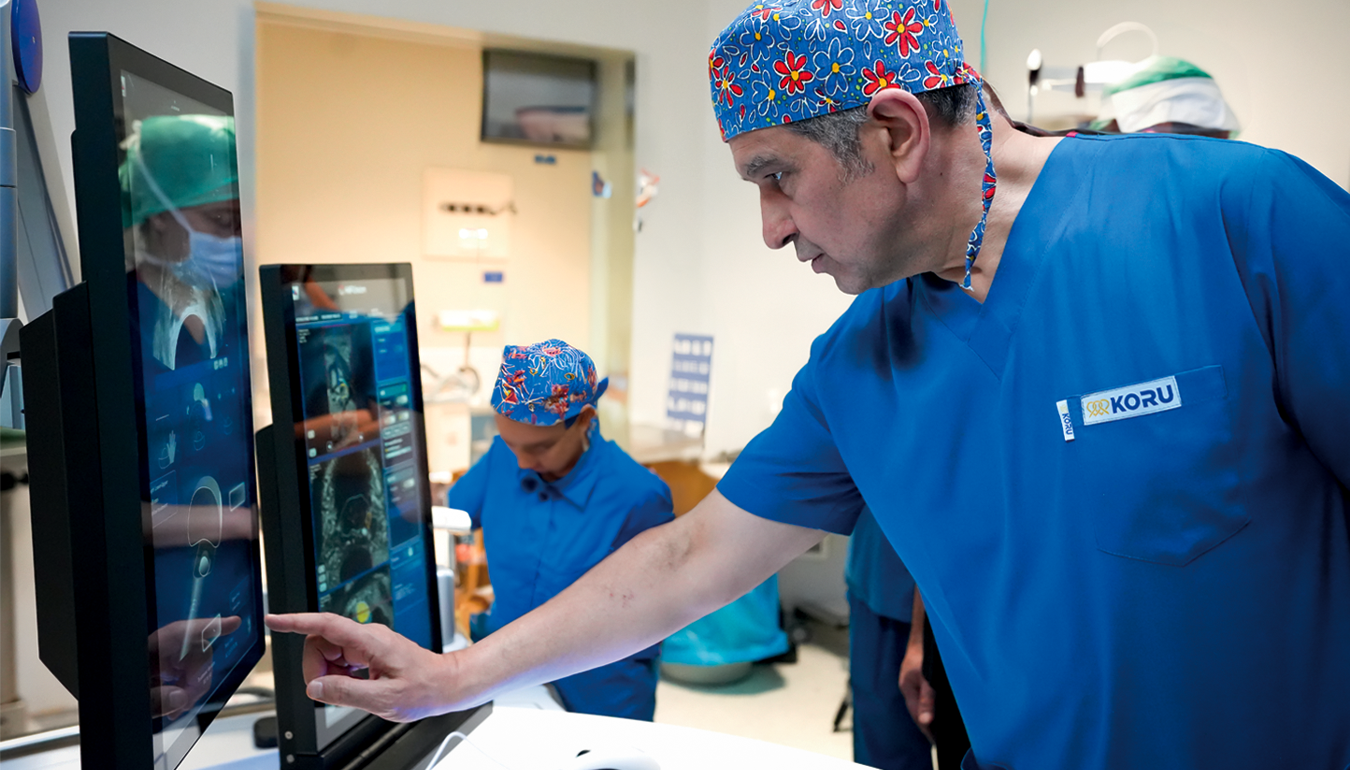Non-Surgical Robotic Prostate Cancer Treatment: HIFU
Prostate cancer is the second most common type of cancer among men, particularly affecting those over the age of 50. Traditional treatment options include surgical intervention (prostatectomy), radiotherapy, and hormone therapies. However, with the advancement of minimally invasive techniques in recent years, patients now have access to more comfortable and lower-risk alternatives. One such method is HIFU (High-Intensity Focused Ultrasound), which offers a modern and effective non-surgical treatment, especially when combined with robotic systems.
What is HIFU?
HIFU is a treatment method that destroys cancerous cells in the prostate by focusing high-frequency sound waves to generate heat energy. The procedure does not require any surgical incisions and is performed under general anesthesia using a specially designed probe inserted through the rectum.
Initially developed for the treatment of benign prostatic hyperplasia (BPH), HIFU has become a widely used option for early-stage prostate cancer. When supported by robotic imaging and navigation systems, the location of the tumor can be pinpointed with millimeter precision, allowing for targeted destruction of only the affected tissue.
Robotic-Assisted HIFU Treatment Process
1. Patient Evaluation: Prior to treatment, the size of the prostate, location, and extent of the tumor are assessed using MRI and biopsy.
2. Planning: The HIFU device, integrated with robotic systems, uses advanced imaging technologies to analyze the tumor and surrounding structures in 3D.
3. Treatment Application: A probe inserted rectally directs focused sound waves at the cancerous area. The targeted tissue is heated to approximately 85–100°C, destroying the cancer cells.
4. Real-Time Monitoring: The robotic system allows for real-time monitoring and automatic adjustments during the procedure.
5. Recovery: Most patients are discharged the same day or the following day. Post-procedure pain is minimal, and patients can quickly return to daily activities.
Advantages of HIFU Treatment
• Non-surgical: No incisions are made.
• Short Hospital Stay: Most patients are discharged on the same or next day.
• Fewer Complications: Compared to open surgery, risks of bleeding, infection, and prolonged recovery are significantly reduced.
• Function Preservation: Robotic precision increases the likelihood of preserving urinary and sexual functions.
• Repeatable: The same treatment can be repeated if needed.
• Combination Therapy Possible: Can be combined with hormone therapy or radiotherapy.
• Radiation-Free: Eliminates long-term radiation-related side effects.
Who is a Suitable Candidate?
HIFU is a suitable option for the following patient groups:
• Patients diagnosed with early-stage, localized prostate cancer
• Elderly individuals or those with additional health issues not eligible for open surgery
• Patients with recurrent cancer after radiotherapy
• Those aiming to maintain high quality of life
• Individuals wishing to avoid complications such as incontinence or sexual dysfunction
However, HIFU may not be effective in cases where the cancer has advanced or spread beyond the prostate. A thorough evaluation is essential before treatment.
Post-HIFU Monitoring and Lifestyle
After treatment, patients should be mindful of the following:
• PSA Monitoring: Regular checks of PSA levels are essential for follow-up.
• MRI Scans: Periodic imaging may be conducted to assess treatment success and detect possible recurrence.
• Lifestyle: Generally, no specific lifestyle restrictions are needed after HIFU, though healthy habits are recommended.
A Next-Generation Approach to Treatment
HIFU offers a groundbreaking solution in the treatment of prostate cancer. Especially when performed with robotic assistance, it provides a highly precise and targeted approach compared to traditional methods. This contributes to both effective cancer control and the preservation of quality of life.
Conclusion
Robotic-assisted HIFU therapy is one of the most innovative and patient-friendly options that modern medicine offers for prostate cancer. With its advanced technology, targeted approach, and minimally invasive nature, it facilitates a smoother recovery process while supporting both the physical and psychological well-being of patients. For individuals diagnosed with prostate cancer, exploring next-generation treatment options like HIFU may open the door to a safer and more effective therapeutic journey.

 Türkçe
Türkçe
 English
English


